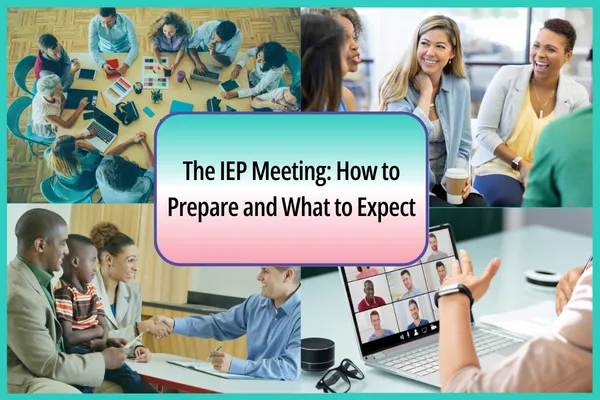
The IEP Meeting: How to Prepare and What to Expect
Introduction The IEP meeting is a critical part of your child’s special education journey. It’s where the plan is created, reviewed, or revised. For parents, this meeting can feel intimidating, especially when sitting across from a table full of professionals. But with preparation and the right mindset, you can walk into that room feeling empowered and ready to advocate for your child.
Before the Meeting: Prepare, Prepare, Prepare Preparation begins well before the scheduled meeting date. Here's how to get ready:
Review your child’s current IEP (if applicable): Familiarize yourself with their goals, services, accommodations, and progress reports.
Gather documentation: Bring samples of your child’s work, recent assessments, private evaluations, medical reports, and any communication with teachers or therapists.
List concerns and questions: Write down any areas you want to discuss—academic, behavioral, social, emotional, or physical.
Talk to your child (if appropriate): Ask how they feel about school, what they enjoy, and what challenges they face. Their perspective is valuable.
Invite support: You can bring a friend, advocate, or specialist to the meeting for moral support and an extra set of ears.

During the Meeting: Be an Informed Advocate The IEP team typically includes teachers, school psychologists, special education providers, a district representative, and you, the parent. Here’s how to navigate the meeting:
Start with introductions and confirm everyone’s role.
Stay focused on your child. Keep the conversation centered around their needs, strengths, and challenges.
Ask for clarification if any term, acronym, or process is unclear.
Share your observations and advocate for services or accommodations you believe are necessary.
Take notes and don’t hesitate to pause the meeting to reflect or regroup.
Remember, you don’t have to sign the IEP on the spot. If you need time to review, take the document home and respond within the allowed timeframe (often 10 days).
After the Meeting: Follow Through Your involvement doesn’t end when the meeting does. Here’s what to do next:
Review the finalized IEP for accuracy and completeness.
Monitor implementation: Ask teachers or service providers how they are applying the IEP.
Track progress: Maintain a log of your child’s achievements and challenges. Save report cards, work samples, and notes from meetings or communications.
Maintain communication with your child’s IEP team. Set up regular check-ins if needed.

Empowerment through Knowledge An IEP meeting isn’t just a formality—it’s your opportunity to shape your child’s educational path. By coming prepared, asking questions, and following through, you become a strong and informed advocate.
Conclusion Attending an IEP meeting may initially feel overwhelming, but with preparation, confidence, and a collaborative mindset, you can make a real difference in your child’s educational experience. Remember, your voice matters. You know your child best, and your advocacy is essential to their success.

